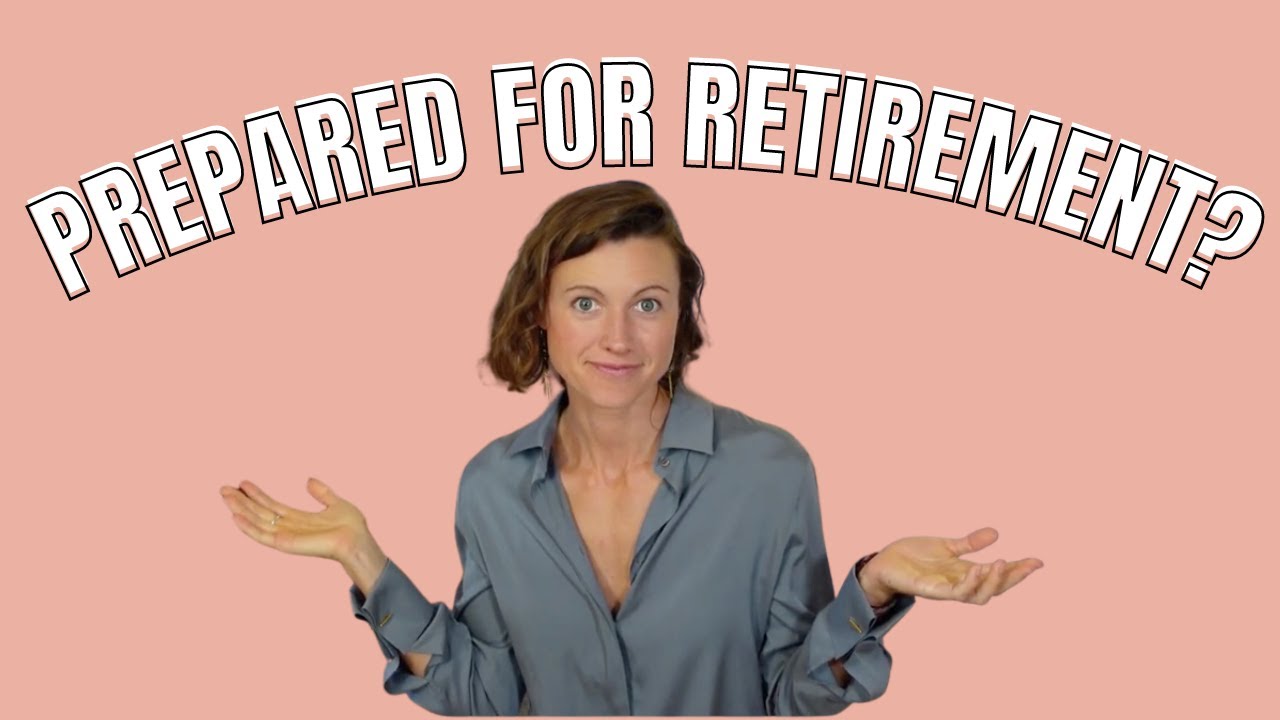Tag: Investing For Retirement

RETIREMENT PLANNING TIPS FOR AGE 59+
Jason 0 Comments Retire Wealthy Retirement Planning Tips for Retiree's
Are you planning for retirement and you're just not sure of the next step. By the end of this video, you will have received seven crucial tips to help you plan for a successful, secure retirement. To learn more about securing your retirement and all the different elements you need to know, subscribe to our channel and hit the bell so you'll be notified of every episode posted on Mondays. We have helped hundreds of our clients with these exact seven tips on planning for their retirement, and they tell us they've never been more confident about their retirement plan. Now it's your turn. Let's dive in. Tip number one, understand your spending. This is really important. Now, what you do not want to do here is to think about what your salary is currently, while you're working.
You want to think about what is your bring home pay after you've put money in your 401(k), after you've been able to pay health insurance, or whatever that might be, that comes out of your paycheck. Think what comes home on a monthly basis. Now, do you save any of that money that goes into your savings account at the bank? Take that out. What we really want to know is how much do you actually spend every month? By the way, if you have a mortgage or some payment that's going to go away by the time you retire, subtract that.
That will let you know what your spending will be when you're in retirement. Tip number two, break income needs into three different areas. You have your essential needs, your wants, and then your giveaway money. It may seem simple, but it's really important to understand what those actually are. Your essential needs are the basics, paying the bills, keeping the lights on, staying fed, staying relatively happy. Your wants are going to be things that you want to do. I know we work hard to get to retirement, we don't want to give up our wants so we want to plan for those as well. Things like having that membership to a golf club or a health club, being able to travel in retirement, so being able to take those vacations that you've been looking forward to. Being able to spoil your grandkids or family members. These are all wants that we want to have planned into the budget for retirement. And then the last is giveaway money. So whether you want to be gifting throughout retirement or whether you want to be donating to charity, or whether you just want to have a plan in place for what you're going to leave behind, that really comes into the giveaway money.
So three major topics, when it comes to your expenses, your essential income needs, your wants, and then your giveaway money. Tip number three, list all of your guaranteed income that will be there after you retire. Now, it's really important now that you understand it needs to be guaranteed. So what are we talking about? Well, that's going to be things like social security, a pension, if you have one, or if you've secured an annuity. It's really important that they be guaranteed because this part of your income plan is what's going to help take care of those essential needs in retirement. You do not want to count things like rent or dividends. While they're nice and they might be secure, they're not guaranteed.
Tip number four, don't rely on the 4% rule. You may be asking yourself, what is the 4% rule? Well, very simply, it's basically saying you can take out 4% of your assets. So for example, let's say by the time you get to retirement, you've accumulated a million dollars. 4% of that is $40,000. The rule, and this is a rule of thumb by the way, the rule says that you could live off of $40,000 a year for the rest of your life and be okay.
Now, we see a couple of flaws in this rule. What if you're invested in the market and your million falls because of market volatility. So go to a 2008 scenario where the average investor loss, anywhere from 30 to 50%. What if you lost 50%? Now your million is 500,000. Are you still going to be able to withdraw 40,000 a year to keep up with your living expenses? Probably not. So that is something that's very important that we realize that we cannot rely on the 4% rule and we need a plan that is structured for our specific situation. Comment below and let us know, what is your biggest retirement planning question? Tip number five, make a list of all of the different types of accounts you have. Now, why are we saying types of accounts? What does that even mean? Well, you're going to want to list, do you have a 401(k), 403(b), a traditional IRA, a Roth IRA, or a brokerage account or a savings account in the bank? You want to list all of those account types and the reason why is because they get taxed differently.

And so when you're building out your retirement income plan, taxes are extremely important. So make sure you make a list of all the different types of accounts. Tip number six, consider how you feel about investing during retirement. Let's talk about this, how would you feel if you lost 10% of your entire retirement nest egg? Well, when I say 10% and you may say, "Well, that doesn't feel like much." But let's put it to a dollar amount. Let's say you have a million dollars saved up and you lose 10% of that.
Well, that's a $100,000. That may feel a bit more than just saying 10%, right? So let's think about that. When you're working and you're putting money into these retirement plans, like a 401(k), typically you started young and you set up an allocation that's probably pretty aggressive, and you just set it and forget it. You're putting money in and it's making money, you don't really think about it.
But then you get down the line closer to retirement, and you're still invested that way when you should be considering your risk exposure more and more, as you get closer to retirement. So that's something that we have to think about as we are transitioning into this phase. Now, what we talk about is, you got to know your risk tolerance and you got to understand how you're currently invested. So many times when we talk to people, they come in the door and they don't even realize how much risk they have on their overall portfolio. So that's why we talk about always looking at alternatives that are going to fit your investment personality. Tip number seven, don't overly worry about the question, do I have enough to retire? Well, why did we say that? Well, we have clients that have a few 100,000 and we have clients that have a few million dollars. And sometimes clients that have a few million dollars do not have as good of a plan as the person who has a few 100,000.
Why is that? Well, if you're spending so much money that you're draining your accounts too rapidly, you're at a threat to run out of money, no matter how much you have. So what's the bigger issue? Our spending plan. We need to really understand how we're spending money and how that's going to play out throughout retirement. So, as you're thinking about your retirement, focus on your spending plan, more than being worried about, do I have enough to retire? Well, that's our seven tips to help you get started down the path to secure your retirement, but what else is needed? Well, there's a lot of different moving parts when it comes to planning for, and living through retirement. We have created a mini video series called Four Steps to Secure Your Retirement. These videos walk you through step-by-step so that you will know exactly what you need to do to secure your retirement. We also have a podcast called Secure Your Retirement. You can subscribe to our podcast with the link below.
For more detailed retirement tips, watch these videos, create your retirement income plan, investing during retirement, buy and hold or active management. If you like this video, hit the like button and be sure to subscribe and share it with your friends.
.

Your Tell-All Guide to Saving for Retirement
Jason 0 Comments Retire Wealthy Retirement Planning Tips for Retiree's
I'm Britt, the co-founder of Dow Janes, and
every single week I have someone asked me how they can start saving for retirement
or how much they need or if it's too late to start saving. Today, I'm going to share my
top tips for starting to save for retirement. And don't worry; it's easier than you think.
If you want more ideas for saving, investing, and making the most of your money,
don't forget to hit the subscribe button and the bell so you don't miss any new
videos. And if you liked this video, definitely give it a thumbs up.
All right. So, there are some misconceptions about retirement saving that I want to address.
First, one thing people often ask us is how much do I need for retirement? What's the magic number?
And the truth is it varies widely.
It depends on where you want to live or what lifestyle you
want to have or when you want to retire. Are you trying to retire at 40 or at 70?0.
If you take anything away from today, I want you to just start saving 20% of your pre-tax
income for your retirement, and you'll be fine. To learn more though, keep listening.
Okay. So how do you start saving for retirement? What you do is you follow the roadmap
steps. You make sure you're doing things in the right order. So we have a whole nother video
on the roadmap steps, but just to recap, the first thing you want to do is make sure
you're spending less than you make each month.
The second thing is to pay off any
high-interest rate debt you have, which is anything with an interest rate over 7%, then
you want to build up an emergency fund.
And then once you have those three things in place,
you're ready to start saving for retirement. So, to do that, you're going to find your monthly
savings number. You can use a simple retirement calculator to figure out how much you want to have
in retirement. I'll link to one in the description below. What you'll do is you'll add in your
current savings, anything you've already saved for retirement already, anything you expect to get
from social security, and then you'll adjust the savings amount to see exactly how much you need
to save each month to be on track, to meet your retirement goals. It's a super easy calculator,
you just enter the numbers. It'll spit out exactly what you need to do, and that number, that savings
amount, that's going to be your monthly goal.
So, if you don't already have an account,
you'll open up a retirement account, and that's where you'll begin to transfer that
savings amount to that account each month.
Where should you save your money? There are
different types of retirement accounts.
So, if your employer offers matching, then you'll
want to open a 401(k) or 403(b). In addition, you can open a Roth IRA or a traditional IRA.
IRA stands for Individual Retirement Account. If you're self-employed, you can also open a SEP
IRA. So for the Roth traditional or SEP IRAs, you can open those at any brokerage places
like Vanguard, Charles Schwab, Fidelity, or with a robo-advisor like Wealthfront or
Betterment. Any of those places offer retirement accounts. So, it's super easy to get started.
Then if your employer offers 401(k) matching, you definitely want to advantage of that.
So, what is 401(k) matching? It's when you save money for your retirement and your company
contributes the same amount that you save. They'll often match up to a certain amount
or a certain percentage of your salary.
So, if your company matches 4% of your
salary and you make $5,000 per month, you could contribute $200 per month towards your
retirement, and your company would contribute an additional $200 per month.
So you basically get
$200 in retirement money for free each month.
It's a way for companies to incentivize
their employees to save for retirement. So, if your employer offers this, definitely take
advantage of it. It's the easiest free money out there. And make sure you're contributing the
maximum amount that they're willing to match.
Okay. The next thing you'll do, if your employer
doesn't offer matching, or if you're, um, if you've already maxed that out, the next thing
you want to do is max out your contribution to your Roth or your traditional IRA. So, each year,
the IRS limits the amount that you're allowed to contribute. In 2021, the amount is $6,000.
If you're over 50, you have an extra bonus. You can contribute $7,000. So, try to contribute the
maximum amount to those accounts each year. So, max out your 401(k) to where your company matches
max out your Roth or your traditional IRA. If you're self-employed, you could also contribute to
your SEP IRA. If you're a great saver and you're saving more than those amounts, you can open
your own brokerage account.

So, a non-retirement account, and save the money there. You can use
that money for whatever you want, but you can know that you're saving that for retirement.
Once you've saved the money in those accounts, what you're going to do is invest that savings. So
for the easiest and simplest way to get invested, you'll invest in target date funds. These
are pre-made portfolios that allocate your money to a mix of stocks and bonds that
are appropriate based on your age.
If you want to invest in index funds yourself,
or if you're picking a fund that your employer offers, then you can use these rules of thumb.
Generally, you want your portfolio to be invested in the percentage of stocks that is equal to
120 minus your age.
So if you're 20 or younger, you want to have 100% of your portfolio
in stocks. If you're 30, you want 90% in stocks, for example. And just a quick
note that if you invest in target date funds, that will do that for you. The allocation
changes the allocation of stocks and bonds changes over time as you get older.
One quick thing to know is that you actually don't need to take your money, your
retirement money, out the year that you retire. You can leave it invested while you're in
retirement and just take out what you need, which means you actually have more time
than you think for your money to grow.
So, hopefully that gives you some peace of mind.
If you're getting started later in the game, if you're wondering how much you should be
saving in retirement savings each month, we have a couple of rules of thumb for you.
And
the bottom line is the sooner you start saving for retirement, the less you actually have to save,
because if you start sooner and you invest that money, it will grow and it will grow over a longer
period of time. If you're starting later in life, you have to save more because it has less
time to grow. So, if you're in your twenties, you can save 15% of your pre-tax income each
month and you'll be set. If you're starting in your thirties, you want to save 20% of your
pre-tax income. If you don't have anything saved and you're just starting to save for retirement in
your forties or your fifties, you'll need to save even more since you're starting later and your
money has less time to grow. If this is you, watch out for our next video on how to start saving
for retirement if you're in your fifties.
All right, the sooner you start saving for
retirement, the easier it is.
So, here's a recap of the steps: One, follow our wealth building
roadmap, so you know what to do in what order. Two, find your monthly savings. Number three, open
a retirement account. Four, take advantage of free money. Five, max out your contributions. Six,
invest your retirement savings, and seven, contribute to your retirement savings each
month. If you want to learn more about how to build your wealth and invest your retirement
savings, then definitely check out our webinar, Think Like an Investor. The link's in the comment
below.
All right. Thanks for watching..
Read More
The 4% Rule for Retirement: What You Need to Know!
Jason 0 Comments Retire Wealthy Retirement Planning Tips for Retiree's
one of the most common retirement planning
questions people have is how much money can I pull from my portfolio every year and live on
in retirement and that's where the four percent rule comes in handy and it basically says that
if you can pull four percent or less from your Diversified portfolio invested in things like
stocks and bonds and live off of that amount while keeping the rest invested then there's
a good chance that your money is going to last 20 30 years or more and as a frame of reference
if you had a million dollars then four percent would be forty thousand dollars if you had
five hundred thousand dollars it would be twenty thousand dollars per year and it's not
set in stone it is based off a study that was done many years ago and has held up well over
time but there are instances where people as they get older could pull more or if they retire
early maybe they want to consider even doing less than that but it's a really good way to get
a frame of reference on looking at how much you've saved and what that can translate
into in retirement as far as income goes

Investing For Retirement – 4 Tips (I Learned Over 30 Years As A Financial Advisor)
Jason 0 Comments Retire Wealthy Retirement Planning Tips for Retiree's
are you bothered with exactly how you'' re mosting likely to pay for retirement you ' re not the only one lots of people are concerned about their retirement financial savings specifically with the volatility in the stock exchange in recent times in this video I'' m going to show you 4 pointers that can help you to invest for retirement these tips are based on my 30 years experience as a financial advisor and I function with hundreds of customers tip top make the most of your employer'' s retirement match several employers provide a retirement with a coordinating payment for instance if your company offers a 50 pair up to 6 percent of your salary as well as you gain fifty thousand dollars per year you must contribute at the very least three thousand dollars to your retirement your company will certainly then match your contribution with fifteen hundred bucks for a total amount of forty 5 hundred bucks in your pension not benefiting from your company'' s matches leaving cash on the table so make sure you contribute a minimum of adequate to your retirement plan to maximize your employer'' s match idea two purchase a diversified portfolio this implies investing in a selection of Investments like supplies and also bonds this should aid you to lower your threat and enhance your opportunities of reaching your retired life goals tip 3 rebalance your profile periodically to make certain that it remains in line with your risk profile if you'' re a person that suches as to handle your profile yourself even more power to you as well as sign up for our network to maintain learning if you'' re the sort of individual who likes assistance selecting and also managing your profile well that'' s the service we provide to our clients I'' ll leave a link in the summary you can click if you'' d like to establish a time to talk to us now on to our following pointer idea 4 Don'' t Panic sell the stock market will certainly fluctuate yet it'' s important to remain tranquil as well as not offer your Investments when the markets take a slump panic marketing can cost you a great deal of cash in the future if you'' re concerned regarding the marketplaces being down when you retire enjoy this video following [Songs]

Your Tell-All Guide to Saving for Retirement
Jason 0 Comments Retire Wealthy Retirement Planning Tips for Retiree's
I'' m Britt, the founder of Dow Janes, and also.
every solitary week I have a person asked me exactly how they can start conserving for retired life.
or just how much they need or if it'' s also late to begin conserving.'Today, I ' m going to share my. top ideas for beginning to save for retired life. As well as wear'' t worry; it ' s simpler than you think. If you desire much more suggestions for saving, investing, and making the most of your money,.
put on'' t forget to hit the subscribe button and the bell so you put on'' t miss any brand-new.
videos. As well as if you liked this video clip, certainly offer it a thumbs up. All. So, there are some misunderstandings about retirement conserving that I wish to deal with.. One point individuals typically ask us is exactly how much do I need for retirement? What'' s the magic number?.
And the truth is it differs widely.It depends
on where you want to live or what way of living you.
wish to have or when you wish to retire. Are you trying to retire at 40 or at 70? 0. If you take anything far from today, I want you to simply start saving 20% of your pre-tax.
To learn more though, keep listening. Just how do you begin conserving for retired life?
steps. You make certain you'' re doing things in the right order.So we have
a whole nother video clip.
on the roadmap steps, yet just to evaluate, the very first point you want to do is make certain.
you'' re costs less than you make each month.
The second thing is to settle any type of.
high-interest rate financial debt you have, which is anything with a rate of interest price over 7%, then.
you want to develop an emergency situation fund. And also after that when you have those three points in position,.
you'' re all set to begin conserving for retired life. So, to do that, you'' re mosting likely to find your monthly.
cost savings number. You can use a simple retired life calculator to determine exactly how much you wish to have.
in retirement. I'' ll link to one in the summary listed below. What you'' ll do is you ' ll include your. existing financial savings, anything you ' ve already conserved for retired life already, anything you anticipate to obtain.
from social safety, and after that you'' ll change the cost savings quantity to see exactly just how much you need.
to conserve each month to be on course, to meet your retirement goals.It ' s

an extremely easy calculator,.
you simply go into the numbers. It'' ll spit out specifically what you need to do, and that number, that financial savings.
quantity, that'' s going to be your month-to-month objective.
So, if you don'' t already have an account,
. you ' ll open up a retirement account, which'' s where you ' ll begin to transfer that.
cost savings total up to that account monthly.
Where should you conserve your cash? There are.
INDIVIDUAL RETIREMENT ACCOUNT. So for the Roth standard or SEP IRAs, you can open those at any broker agent places.
like Lead, Charles Schwab, Integrity, or with a robo-advisor like Wealthfront or.
Betterment.Any of those areas supply retirement accounts. What is 401( k) matching? It ' s when you conserve cash for your retirement and also your business.
They ' ll frequently match up to a particular amount. or a'particular percentage of your wage.
If your business matches 4 %of your.
salary as well as you make$ 5,000 each month, you can add $200 monthly in the direction of your. retirement, as well as your firm would certainly add an added$ 200 per month. So you basically obtain. $200 in retired life cash free of cost each month
. It ' s a way for firms to incentivize. their staff members to conserve for retirement. So, if your company offers this, definitely take. advantage of it.
It ' s the easiest totally free money out there. And also make certain you ' re contributing the.
you want to do is max out your contribution to your Roth or your typical IRA.So, every year,.
the IRS restricts the amount that you'' re permitted to contribute. In 2021, the amount is $6,000. If you'' re over 50, you have an additional bonus offer. You can add $7,000. So, attempt to add the.
maximum total up to those accounts every year. max out your 401( k) to where your company matches.
max out your Roth or your standard individual retirement account. If you'' re self-employed, you could also contribute to.
If you'' re an excellent saver as well as you'' re saving a lot more than those amounts, you can open up. A non-retirement account, and also save the cash there.
that money for whatever you want, yet you can know that you'' re conserving that for retirement. As soon as you ' ve saved the cash in those accounts, what you'' re mosting likely to do is spend that financial savings. .
for the easiest and also simplest way to get spent, you'' ll buy time frame funds.These.
are pre-made portfolios that assign your money to a mix of stocks and bonds that.
are ideal based on your age.
If you wish to buy index funds on your own,.
or if you'' re choosing a fund that your company provides, after that you can make use of these rules of thumb..
Generally, you want your portfolio to be spent in the portion of stocks that amounts to.
120 minus your age. If you'' re 20 or more youthful, you desire to have 100% of your portfolio.
in stocks. If you'' re 30, you desire 90% in supplies. And just a fast.
note that if you purchase time frame funds, that will certainly do that for you. The allowance.
You can leave it invested while you'' re in.
than you think for your cash to expand.
So, hopefully that provides you some peace of mind..
If you'' re starting later on in the game, if you'' re wondering just how much you ought to be.
saving in retired life savings each month, we have a couple of guidelines for you.And.
the lower line is the faster you start conserving for retired life, the much less you actually have to save,.
due to the fact that if you start sooner and you invest that money, it will expand and it will certainly grow over a longer.
duration of time. If you'' re starting later on in life, you have to save more because it has much less.
time to expand. If you'' re in your twenties, you can conserve 15% of your pre-tax revenue each.
month and also you'' ll be established. If you'' re starting in your thirties, you desire to conserve 20% of your.
pre-tax earnings. If you put on'' t have actually anything conserved and also you'' re simply starting to save for retirement in.
your forties or your fifties, you'' ll need to conserve much more considering that you'' re starting later on and also your.
cash has less time to grow.If this is you, see out for our following video on how to start conserving.
for retired life if you'' re in your fifties.
All right, the faster you begin conserving for.
retired life, the much easier it is. So, here'' s a recap of the actions: One, follow our riches structure.
roadmap, so you recognize what to do in what order. Two, locate your monthly financial savings. Number 3, open.
a pension. Four, make the most of free money. 5, max out your contributions. Six,.
spend your retirement financial savings, and also 7, add to your retirement financial savings each.
month. If you intend to discover even more about exactly how to develop your wealth and also invest your retirement.
cost savings, after that absolutely look into our webinar, Assume Like an Investor. The web link'' s in the remark.
listed below. All right. Many thanks for seeing.
And wear'' t concern; it ' s less complicated than you think. What you'' ll do is you ' ll include in your. It ' s when you conserve money for your retirement and also your firm. If you'' re over 50, you have an extra benefit. Once you ' ve saved the money in those accounts, what you'' re going to do is spend that cost savings.
Read More
Recent Comments